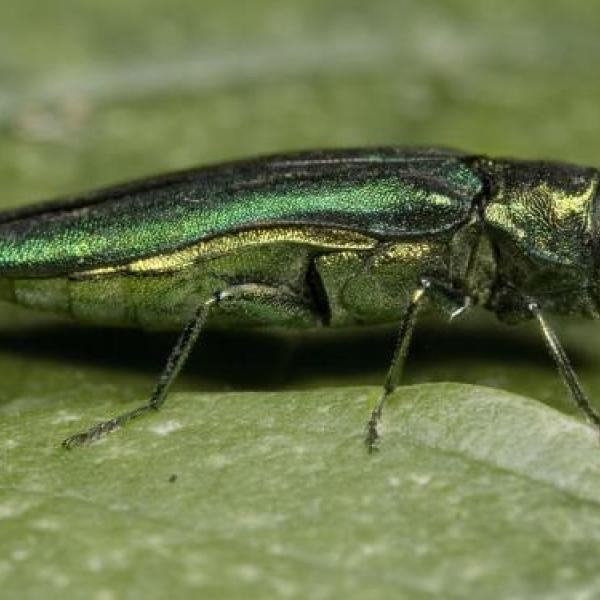
News Source
By Brian Nearing
Albany
The state's new system to confront the invasive emerald ash borer, which relies on quarantine zones drawn around forests known to be infested, is unique among the 25 states in the eastern U.S. where the ash-devouring pest is found.
As a consequence of no longer lining up with federal control rules, the U.S. Department of Agriculture has added the border between New York and uninfested Vermont to a federal quarantine zone, which will bar transport of ash that up this point has been unfettered.
Other states infested by the insect use a county-by-county quarantine system to control the movement of ash timber, which New York this month changed over concerns that a 40-county quarantine south of the state Thruway was regulating too much forest where the borers have not been found.
This month, the state replaced it with a system of 14 "restricted zones" encircling areas of known infestation that covers much less forest than county-based bans, the system used by other infested states.
The emerald ash borer has killed tens of millions of ash trees in the Midwest. First appearing in New York in 2009, the insect poses a growing threat to an industry that uses ash trees for such iconic products as major league baseball bats like the Louisville Slugger. The borer is in parts of 23 counties south of the Thruway.
The state timber industry, which said the new state rules will make it easier to move ash products, expects the new federal quarantine at the Vermont border to have minimal impact on commerce, said Eric Carlson, executive director of the Empire State Forest Products Association, on Friday.
Federal officials reviewed New York's change, but have no control over state decisions to implement programs meant to prevent the spread of borers within a state, said Paul Chaloux, national policy coordinator for the USDA Cooperative Emerald Ash Borer Project. "States are free to set up their (ash borer) quarantine systems as they wish," he said, calling New York's approach "very innovative."
However, federal rules meant to keep insects from moving from one state to another require that if a state system is not "parallel and equivalent" with federal control rules, then USDA must quarantine that state's entire border. Under New York's former county-based quarantine, the Vermont border was open, because none of the North Country counties at the Vermont board have reports of the insects.
USDA issued its order quarantining the New York/Vermont border on May 1, eleven days before the state Department of Agriculture and Markets unveiled the new ash borer control system.
Under the old state system, Adirondack loggers could take ash logs to Vermont without any regulations or permits; now, such deliveries must comply with federal quarantine rules meant to ensure logs do not inadvertently move beetles into uninfested areas.
Now, said Chaloux, ash logs, lumber and other products must be inspected and treated before crossing into Vermont, which is the only New England state not to have the beetles. "We will certainly be watching New York's new system," he added.
Adult borer beetles fly from May to August, with the average female traveling about a half-mile before laying about 60 tiny eggs on the bark of an ash. After the eggs hatch, larvae burrow into the tree, where they feed over the winter before emerging as a new batch of adults the following spring, leaving behind a distinctive D-shaped hole in the tree bark.
Once infested, trees usually are dead within three years as larvae block the flow of water and nutrients. Infested trees sometimes display what is called "suckering growth," which appears as many tiny shoots that sprout from the middle of the trunk. That happens after damage from the beetles cuts off nutrition above that level, above which the tree has begun dying,
Since appearing near Detroit in 2002, the beetle has killed millions of ash trees in the Midwest and spread unchecked into 24 states and the Canadian provinces of Quebec and Ontario.
Chaloux said field tests of a predatory Asian wasp that attacks beetle larvae have been promising, and such wasps could be released in New York by next year in effort to reduce the beetle population.
bnearing@timesunion.com • 518-454-5094 • @Bnearing10